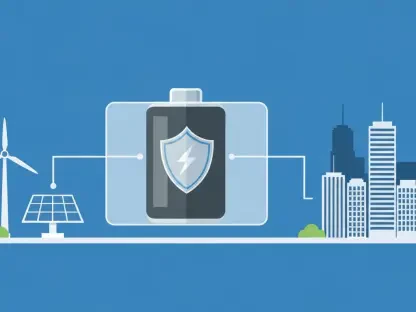In an unexpected yet strategic shift, the U.S. government decided to revoke the export restrictions previously imposed on semiconductor design software to China. Implemented just six weeks prior, the regulation aimed to curb China’s growing prowess in chip design, reflecting deep-seated geopolitical tensions between the two nations. The historical backdrop of this decision lies in the competition over control and dominance in semiconductor technology, a critical component in global technological infrastructure. By lifting these restrictions, the U.S. signifies a nuanced understanding of the intricate global dependencies within the semiconductor supply chain. The original conditions required companies like Synopsys, Cadence Design Systems, and Siemens to obtain specific licenses for software exports, posing a severe restriction on China’s semiconductor design capabilities and impacting the revenue streams of these firms. As these limitations dissipate, a broader context encompassing trade-offs and negotiations, particularly those involving rare earth minerals, comes to light.
Geopolitical and Economic Implications
The altercation between the U.S. and China over semiconductor technology highlights the interwoven nature of trade, technology, and global politics. Initially, the restrictions were part of a broader tactic during the Trump administration, escalating the ongoing tech war by targeting software tools essential for chip design. This approach dramatically intensified the technological standoff between the two economic giants, indicating a significant policy shift toward constraining China’s technological advancements. Had the curbs persisted, they likely would have disrupted China’s semiconductor design sector, causing widespread economic fallout both in China and for U.S. companies deriving substantial revenues from it. Recognizing potential mutual economic damage from these controls, the U.S. move to lift them is as much a strategic recalibration as it is an acknowledgment of economic realities. Despite these changes in software restrictions, tariffs between the U.S. and China remain in place, with a current truce set to expire in August, leaving the trajectory of future relations tinged with uncertainty. This episode highlights the volatile nature of international trade policies and technological dependencies, reminding stakeholders of the ongoing need for diplomatic navigation in preserving economic stability.
The broader agreement between the U.S. and China also underscores shared interests and the complex realities of mutual reliance, particularly concerning rare earth mineral access. Rare earth elements are pivotal in manufacturing various high-tech devices, including semiconductors, renewable energy technologies, and defense systems. The mutual access to these resources is critical for both nations, driving the decision to reverse software restrictions as part of broader negotiations. Such negotiations accentuate the essential role diplomacy plays in addressing global supply chain vulnerabilities and unpacking the multifaceted trade-offs required to balance technological and economic interests. Through this lens, the ongoing semiconductor competition encapsulates a broader struggle for technological innovation leadership, where economic interests and geopolitical strategies perpetuate a delicate balance across unfolding global events.
Trade-Offs and Diplomatic Navigation
This shift in policy serves as a telling example of how diplomacy continually plays a role in navigating complex international trade landscapes, especially in sectors as vital as semiconductors. Tensions over semiconductor technology have repeatedly underscored the competitive nature of U.S.-China relations, a competition marked significantly by both technological ambitions and economic strategies. Despite the technological tug-of-war, the exchange of technological advancements and resources between these two countries remains critical for maintaining global innovation ecosystems. The current scenario emphasizes the broader implications of trade disputes on technology and the necessity of careful diplomatic engagement to secure a stable economic environment.
Examining the intricate dynamics of these trade-offs, it’s evident that the delicate balance between protecting national technological interests and fostering international cooperation requires skillful negotiation and a pragmatic outlook. The potential for economic repercussions on domestic and global scales remains a significant consideration, prompting careful navigation of trade policies. While the current removal of export restrictions provides a momentary ease in tensions, the persistent challenges in U.S.-China relations demand ongoing, resilient diplomatic efforts to prevent escalation into restrictive trade measures. The semiconductor sector’s importance means it will continue to be a focal point of negotiations and a barometer of bilateral relations.
Future Considerations in Semiconductor Competition
In a surprising but calculated move, the U.S. government has decided to lift the export restrictions on semiconductor design software to China, which were just enforced six weeks ago. Originally, these restrictions aimed to limit China’s advancement in chip design—a focal point in the ongoing geopolitical rivalry between the U.S. and China. The backdrop of this decision is framed by the intense competition for control in semiconductor technology, a vital element of global technological infrastructure. By easing these restrictions, the U.S. acknowledges the complex interdependencies within the semiconductor supply chain. Initially, firms like Synopsys, Cadence Design Systems, and Siemens had to obtain specific licenses to export software, which severely restricted China’s chip designing capabilities and affected these companies’ revenue streams. With the rollback of these restrictions, this decision highlights broader trade negotiations that involve crucial elements like rare earth minerals, essential in tech manufacturing.









